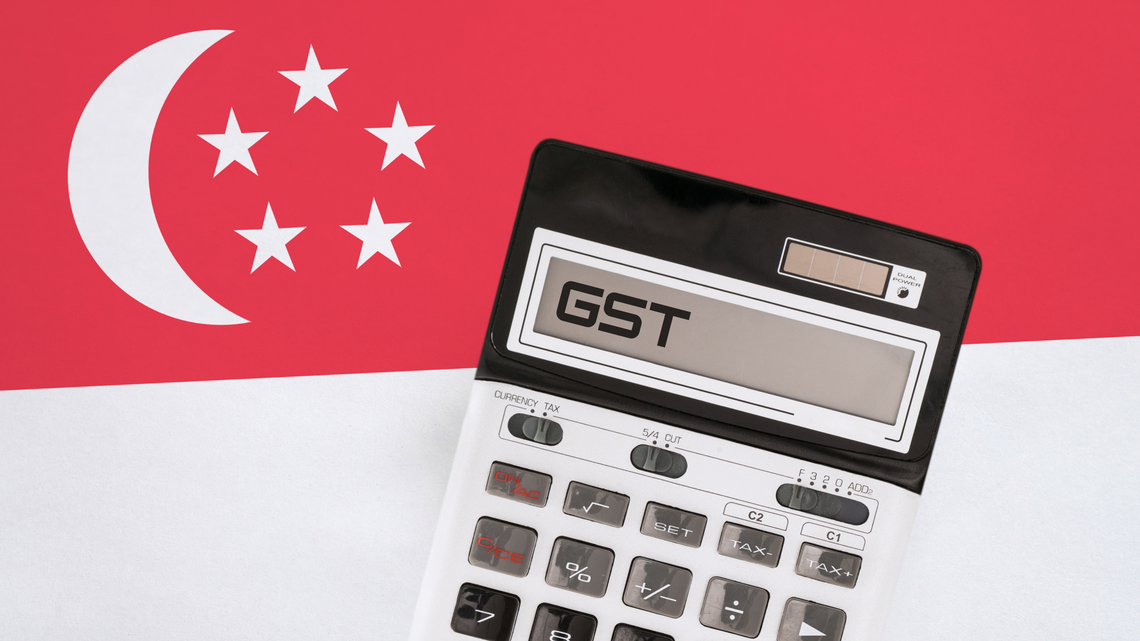As Singapore emerges as a key player in the global ecommerce landscape, it’s crucial for US merchants to understand the local goods and services tax (GST) system. This dynamic Asian market has updated its GST regulations, particularly affecting ecommerce, to ensure a level playing field for both local and international vendors. In this guide, we’ll explain the essentials of Singapore GST for direct-to-consumer brands, including registration, compliance, and solutions for facilitating a smooth and successful expansion.
Key Highlights:
- Singapore has a standard GST rate of 9%.
- The duty and tax de minimis in Singapore is $400 SGD (~$290 USD), meaning orders valued below this amount clear free of duties and taxes, including GST, unless you cross a sales threshold.
- GST registration is required when a merchant imports over $100,000 SGD (~$73k USD) of low-value goods (under $400 SGD) within a 12-month period to Singapore and sells more than $1M SGD globally.
- Once registered, businesses are required to collect the 9% GST on B2C shipments of low-value goods to Singapore.
- For orders over the $400 SGD de minimis, duty and tax will be collected during the customs clearance process.
Understanding Singapore GST
Goods and services tax (GST) in Singapore is a 9% value-added tax applied to most products consumed within the country, including those sold online and imported. For US ecommerce brands, this means sales to consumers in Singapore may be subject to GST which can impact your pricing. Since this tax is ultimately paid by end consumers, it’s crucial for merchants to adjust their website checkout systems to comply with regulations, ensuring accurate application of GST on eligible transactions.
Calculating Singapore GST:
To calculate GST in Singapore, start by totaling the product’s price, shipping costs, and insurance to determine the CIF (cost, insurance, freight) value. Then, if customs duties apply, you’ll also need to add these to the CIF value. Lastly, apply the Singapore GST rate of 9% by multiplying the total amount (CIF plus any duties) by 0.09.
Tax Rules & Regulations in Singapore
Sinagpore Duty & Tax De Minimis
Singapore has a duty and tax de minimis of $400 SGD (~$290 USD), meaning that orders valued below this amount will clear free of duties and taxes, including the 9% GST unless you cross a sales threshold. Duty and tax will be collected during the customs clearance process for orders over the $400 SGD de minimis. It’s important to know that the de minimis amount is calculated based on the CIF value of the shipment.
Requirements for GST Registration in Singapore
The registration threshold for GST in Singapore has two components, a local turnover and a global turnover. US-based businesses are required to register for GST if:
(1) their sales of low-value goods (under $400 SGD) to consumers in Singapore exceed $100,000 SGD (~$73,000 USD) within any given 12-month period and
(2) their global sales exceed $1M SGD.
Once registered, brands must charge customers in Singapore the 9% GST at checkout for any orders under $400 SGD moving forward and file periodic returns with the Inland Revenue Authority of Singapore (IRAS). Note that for GST-registered businesses, shipments over $400 SGD will still have GST collected on import. There is no need to report taxes on these transactions as your carrier or customs broker will continue to manage this for you.
Merchants who remain under the selling threshold do not need to register for a local tax ID or collect GST at checkout for orders under $400 SGD as the tax de minimis applies to their shipments.
E-Commerce Compliance Options for Singapore GST
When shipping to Singapore, understanding and fulfilling the obligation to pay GST is crucial for both legal compliance and ensuring transparent pricing for customers. If your brand has crossed the registration threshold, here are your options to become compliant:
- Register for Singapore GST – IRAS offers a simplified tax registration program for overseas companies that want to apply for a local tax ID and file their own GST returns. Keep in mind you’ll also need to update your checkout process to collect the 9% GST from consumers.
- Enroll in the Passport Seller of Record™ (SOR) Program – The Seller of Record program allows brands to use Passport’s GST number to clear shipments through Singapore, avoiding the need for complex registrations and filings. As a merchant, you’ll simply collect GST at checkout, and Passport will manage the rest, including tax returns with the proper authorities and even monitoring sales thresholds.
Here at Passport®, we understand the intricacies that come with international shipping, especially regarding import tax regulations. Our Seller of Record solution is designed to give ecommerce brands a simpler way to handle Singapore GST compliance with a quick and seamless enrollment process. If you’re interested in Passport’s SOR program, reach out to our team here to get started.
Frequently Asked Questions:
What is the current GST rate in Singapore?
The current GST rate in Singapore is 9%.
What is the GST increase in Singapore?
The goods and services tax (GST) in Singapore was increased in two stages: firstly, from 7% to 8% in January 2023, and subsequently, from 8% to 9% in January 2024.
How does Singapore GST work?
In Singapore, the goods and services tax (GST) is a 9% tax applied to most products, including those sold online and imported. For US ecommerce brands, orders below the de minimis value of $400 SGD (~$290 USD) are exempt from GST unless you exceed a sales threshold. Once registered, businesses must collect and remit GST on all B2C shipments of low-value goods (under $400 SGD) to consumers in Singapore. For orders above the de minimis threshold, GST is collected during the customs clearance process.
What is the GST rule in Singapore?
In Singapore, the GST rule mandates a 9% tax on most goods and services, including those sold online and imported. Orders valued below the de minimis threshold of $400 SGD (~$290 USD) are exempt from GST unless sales exceed a specific threshold. Merchants must register for GST when their sales of low-value goods to consumers in Singapore exceed $100,000 SGD (~$73,000 USD) within a 12-month period, and their global sales exceed $1M SGD. Once registered, they are required to collect and remit GST on all applicable transactions.
Who pays GST in Singapore?
Although GST is ultimately paid by end consumers, businesses may be responsible for collecting this tax from their customers and remitting it to the Inland Revenue Authority of Singapore (IRAS).
How is Singapore GST calculated?
To calculate Singapore GST, first determine the total CIF (cost, insurance, freight) value of the product, which includes the price of the product, shipping costs, and insurance. If customs duties apply, add these to the CIF value. Then, apply the 9% GST rate by multiplying the total amount (CIF plus any applicable duties) by 0.09.
What is the VAT in Singapore?
The value-added tax (VAT) in Singapore is known as the goods and services tax (GST), with a current standard rate of 9%. This tax is similar to VAT in other countries, serving as a consumption tax levied on the supply of goods and services.
Is Singapore VAT or GST?
Singapore uses the goods and services tax (GST) system, which is its version of a value-added tax (VAT). The current GST rate is 9%.
What is the difference between VAT and GST in Singapore?
In Singapore, the goods and services tax (GST) functions similarly to the value-added tax (VAT) found in other countries, applying to imports and most goods and services.
What is the GST threshold limit in Singapore?
GST registration is required when a merchant imports over $100,000 SGD of low-value goods (under $400 SGD) within a 12-month period to Singapore and sells more than $1M SGD globally.
How much is GST in Singapore 2024?
The GST rate in Singapore for the year 2024 is 9%.
What is the ecommerce tax in Singapore?
In Singapore, the ecommerce tax refers to the goods and services tax (GST) which is currently set at a standard rate of 9%. This tax applies to most goods and services, including those sold online and imported into the country, and it is the responsibility of businesses to collect and remit this tax to the authorities when applicable, especially if they exceed certain sales thresholds.
Do I charge GST to customers in Singapore?
If your business is not registered for GST in Singapore and the value of your shipments remains below the de minimis threshold of $400 SGD (~$290 USD), you are not obligated to charge GST. However, once your sales surpass a distance selling threshold, GST registration becomes mandatory, and you will need to begin charging this tax on applicable transactions.
Do US companies need to register for Singapore GST?
US companies need to register for Singapore GST if they exceed specific sales thresholds, including selling over $100,000 SGD of low-value goods (under $400 SGD) within Singapore in a 12-month period and having global sales exceeding $1M SGD.
Do US companies have to pay Singapore GST?
US companies are required to pay Singapore GST if they are registered for GST in Singapore and they exceed specific sales thresholds including selling over $100,000 SGD of low-value goods (under $400 SGD) within Singapore in a 12-month period and having global sales exceeding $1M SGD. Once registered, they must charge and remit the 9% GST on applicable transactions, such as sales of low-value goods to consumers in Singapore.
Is Singapore CIF or FOB when it comes to the calculation of duties and taxes?
Singapore uses the cost, insurance, and freight (CIF) method for calculating duties and taxes. This means that duties and taxes are calculated based on the product’s price, shipping costs, and insurance.




